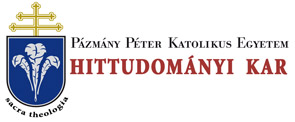Folia Theologica et Canonica 1. 23/15 (2012)
SACRA THEOLOGIA - László Perendy, Athenagoras on the Triune God of Christians
74 PERENDY LASZLO Connected with God’s goodness is the problem of evil. Crehan thinks that Athenagoras’ solution to avoid dualism is rather primitive. The devil is God’s adversary in the sublunary world, but not his counterpart as a being: The devil is not the counterpart to God’s being, but to His goodness, which goodness has been declared to belong to, but not to be identified with, God’s being. Thus Athenagoras finds a rather primitive way of avoiding the dualism which in his Gnostic surroundings must have been very catching. That he should avoid it says much for his integrity as a Christian thinker.29 Treating Athenagoras’ Trinitology, Crehan reminds us that the language of the apologist was still inadequate. On one hand he affirms the eternal existence of the Logos, on the other he acknowledges that the Word achieved a special kind of relationship to matter at the moment of creation.30 2. Recognizing the Structural and Doctrinal Similarities as compared with Middle Platonic Works In what I recall the second period of research scholars became aware of the demand that more attention should be paid to the structural and doctrinal characteristics of the contemporary works of Middle Platonism in order to understand and appreciate Athenagoras’ literary and theological activity. Jean Daniélou did pioneering work in this field of research. In his often-quoted work about the connections of the message of the gospel and the Hellenistic culture, he devotes a chapter to the examination of the Platonic texts found in second and third century Christian writers. He mentions that Athenagoras associates31 the famous passage of Timaeus 28c with Timaeus 41a in order to distinguish God, the uncreated, from the stars, the created ‘gods’: cpqaiv cfuv ó | nXáxcov «xàv pev onv 7tovr|xf]v Kai îiaxépa xoüSe xoû navxoç eùpeîv xe ëpyov Kai eùpôvxa eiç îiavxaç áőúvaxov Aiyeiv», ëva xàv ayewqxov Kai áíőiov vocov 0eóv. Et S’oîôev Kai ak\ouç otov íjXiov Kai aeA,fi|vr|v Kai àa- xépaç, àXk' cbç yevtixoùç oîôev aùxoùç- «0eoi0eœv, Sv èyco Sripioupyôç 7iaxf|p xe ëpyœv a aÀmxa ègoù pp 0éÀ,ovxoç, xô gèv ouv 5e0èv nâv Àmxov». Ei xoivuv oük ècxiv a0eoç nMxœv, ëva xàv Sppvoupyôv xœv őXav vorâv áyéwpxov 0eóv, 29 Crehan, J. H., Athenagoras, 19. 30 Crehan, J. H., Athenagoras, 22. 31 The combination of Plato quotations was ordinary practice in Middle Platonism.
